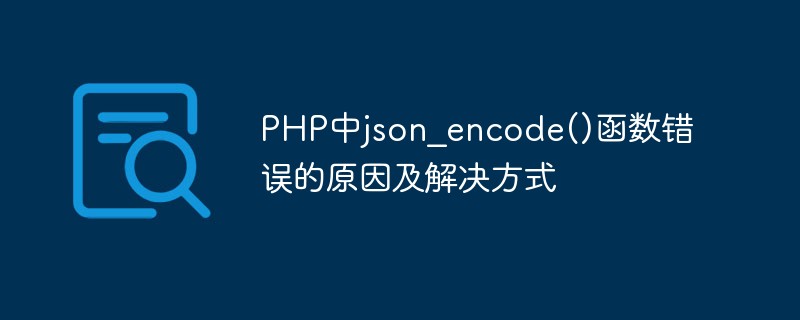In Java development, Java SE errors are often encountered. These errors may cause the program to fail to run normally, seriously affecting the development process and time. This article will introduce some common types of Java SE errors and how to deal with and avoid these errors.
1. Common types of Java SE errors
- ClassNotFoundException: The class or interface is not found or cannot be accessed. The reason may be that the class name is misspelled, the class is not introduced in the classpath, or the version of the class does not match.
- NoClassDefFoundError: The definition of a key class cannot be found. The possible cause is the same as ClassNotFoundException, or it may be that the order of class loading and initialization is incorrect.
- NullPointerException: This exception is thrown when trying to call a method or access a property on a null object. This exception is usually related to poorly written code, such as using an uninitialized object or accessing a non-null object property, but the property is null.
- ArrayIndexOutOfBoundsException: This exception is thrown when accessing a non-existent element through an array index. The cause may be that the array is out of bounds, the array is not initialized, or the array initialization error is wrong, etc.
- ClassCastException: Type conversion error exception, mainly due to converting an object to an incompatible type.
- ArithmeticException: Arithmetic calculation error exception. The code may result in a division by zero, causing the calculation to fail or an overflow to occur.
- OutOfMemoryError: Out of memory error. This exception is generated when the JVM tries to allocate more memory, but cannot meet the memory requirements.
2. How to deal with Java SE errors
1. Logging
When a Java SE error occurs, it is very important to record relevant error information in a timely manner. For this reason, it is recommended to add logging to the code to detect and resolve Java SE errors in a timely manner. Recording the time the problem occurred, error code, and stack trace information in the log can easily trace the source of the error and speed up the resolution of the problem.
- Exception handling
The exception handling mechanism is one of the best practices for Java SE error handling. By using the Try-Catch method to handle exceptions, the impact of Java SE errors can be effectively reduced. When handling exceptions, it is very important to capture and handle errors. Monitoring application exceptions and handling them in a timely manner can reduce program crashes caused by errors.
- Debugging
Commonly used debugging tools in Java development include Eclipse, NetBeans, IntelliJ, etc. During debugging, you can use the breakpoint features of these tools to narrow down the scope of the problem and step through the functionality of your code. Debugging can improve the efficiency of Java SE error handling and ultimately achieve the purpose of solving the problem.
3. How to avoid Java SE errors
- Write good code
Writing good code is one of the most important ways to avoid Java SE errors one. A good way to write code is to minimize temporary variables, repeated code, redundant statements, etc. Paying attention to good habits in code writing can effectively reduce the possibility of Java SE errors.
- Optimize code
For time-consuming operations, optimization can be performed. For example, you can consider using cache to improve efficiency, using multi-threading to improve concurrency, using databases rationally, etc.
- Use the Java API correctly
When using the Java API, you need to read the documentation carefully. If there are no detailed usage instructions in the documentation, you can try to find code samples or refer to other technical documentation. Best practices should be followed in API usage to reduce the likelihood of Java SE errors.
In short, Java SE error handling is an inevitable part of Java development. Only through careful code writing, detailed logging, and effective exception handling and debugging methods can we effectively avoid and handle Java SE errors, improve the stability and reliability of the code, and provide a solid guarantee for the success of the project.
The above is the detailed content of Java Errors: Java SE Errors, How to Deal with and Avoid. For more information, please follow other related articles on the PHP Chinese website!
 PHP语言开发中如何处理请求头错误?Jun 10, 2023 pm 05:24 PM
PHP语言开发中如何处理请求头错误?Jun 10, 2023 pm 05:24 PM在PHP语言开发中,请求头错误通常是由于HTTP请求中的一些问题导致的。这些问题可能包括无效的请求头、缺失的请求体以及无法识别的编码格式等。而正确处理这些请求头错误是保证应用程序稳定性和安全性的关键。在本文中,我们将讨论一些处理PHP请求头错误的最佳实践,帮助您构建更加可靠和安全的应用程序。检查请求方法HTTP协议规定了一组可用的请求方法(例如GET、POS
 PHP中json_encode()函数错误的原因及解决方式May 11, 2023 am 09:03 AM
PHP中json_encode()函数错误的原因及解决方式May 11, 2023 am 09:03 AM随着Web应用程序的不断发展,数据交互成为了一个非常重要的环节。其中,JSON(JavaScriptObjectNotation)是一种轻量级的数据交换格式,广泛用于前后端数据交互。在PHP中,json_encode()函数可以将PHP数组或对象转换为JSON格式字符串,json_decode()函数可以将JSON格式字符串转换为PHP数组或对象。然而,
 PHP命令行错误:你可能不知道的事情May 11, 2023 pm 08:21 PM
PHP命令行错误:你可能不知道的事情May 11, 2023 pm 08:21 PM本文将介绍关于PHP命令行错误的一些你可能不知道的事情。PHP作为一门流行的服务器端语言,一般运行在Web服务器上,但它也可以在命令行上直接运行,比如在Linux或者MacOS系统下,我们可以在终端中输入“php”命令来直接运行PHP脚本。不过,就像在Web服务器中一样,当我们在命令行中运行PHP脚本时,也会遇到一些错误。以下是一些你可能不知道的有关PHP命
 PHP语言开发中如何处理日期格式化错误?Jun 09, 2023 pm 06:40 PM
PHP语言开发中如何处理日期格式化错误?Jun 09, 2023 pm 06:40 PM在PHP语言开发中,日期格式化错误是一个常见的问题。正确的日期格式对于程序员来说十分重要,因为它决定着代码的可读性、可维护性和正确性。本文将分享一些处理日期格式化错误的技巧。了解日期格式在处理日期格式化错误之前,我们必须先了解日期格式。日期格式是由各种字母和符号组成的字符串,用于表示特定的日期和时间格式。在PHP中,常见的日期格式包括:Y:四位数年份(如20
 PHP中的容错机制May 23, 2023 am 08:16 AM
PHP中的容错机制May 23, 2023 am 08:16 AM在编写程序时总会存在各种各样的错误和异常。任何编程语言都需要有良好的容错机制,PHP也不例外。PHP有许多内置的错误和异常处理机制,可以让开发者更好地管理其代码,并正确地处理各种问题。下面就让我们一起来了解一下PHP中的容错机制。错误级别PHP中有四个错误级别:致命错误、严重错误、警告和通知。每个错误级别都有一个不同的符号表示,以帮助识别和处理错误:E_ER
 PHP语言开发中解析JSON时常见错误及处理方法Jun 10, 2023 pm 12:00 PM
PHP语言开发中解析JSON时常见错误及处理方法Jun 10, 2023 pm 12:00 PM在PHP语言开发中,常常需要解析JSON数据,以便进行后续的数据处理和操作。然而,在解析JSON时,很容易遇到各种错误和问题。本文将介绍常见的错误和处理方法,帮助PHP开发者更好地处理JSON数据。一、JSON格式错误最常见的错误是JSON格式不正确。JSON数据必须符合JSON规范,即数据必须是键值对的集合,并使用大括号({})和中括号([])来包含数据。
 PHP语言开发中如何处理开发环境与生产环境的数据不一致错误?Jun 10, 2023 am 10:31 AM
PHP语言开发中如何处理开发环境与生产环境的数据不一致错误?Jun 10, 2023 am 10:31 AM随着互联网的快速发展,开发人员的任务也随之多样化和复杂化。特别是对于PHP语言开发人员而言,在开发过程中面临的最常见问题之一就是在开发环境和生产环境中,数据不一致的错误问题。因此,在开发PHP应用程序时,如何处理这些错误是开发人员必须面对的一个重要问题。开发环境和生产环境的区别首先需要明确的是,开发环境和生产环境是不同的,它们有着不同的设置和配置。在开发环境
 国外程序员分享的PHP错误处理与调试技巧May 11, 2023 pm 12:12 PM
国外程序员分享的PHP错误处理与调试技巧May 11, 2023 pm 12:12 PMPHP(HypertextPreprocessor)是一种广泛用于Web开发的脚本语言。在开发PHP应用程序时,错误处理和调试被认为是非常重要的一块。国外程序员在经验中积累了许多PHP错误处理和调试技巧,下面介绍一些比较常见和实用的技巧。错误报告级别修改在PHP中,通过修改错误报告级别可以显示或禁止显示特定类型的PHP错误。通过设置错误报告级别为“E_AL


Hot AI Tools

Undresser.AI Undress
AI-powered app for creating realistic nude photos

AI Clothes Remover
Online AI tool for removing clothes from photos.

Undress AI Tool
Undress images for free

Clothoff.io
AI clothes remover

AI Hentai Generator
Generate AI Hentai for free.

Hot Article

Hot Tools

Zend Studio 13.0.1
Powerful PHP integrated development environment

Notepad++7.3.1
Easy-to-use and free code editor

SecLists
SecLists is the ultimate security tester's companion. It is a collection of various types of lists that are frequently used during security assessments, all in one place. SecLists helps make security testing more efficient and productive by conveniently providing all the lists a security tester might need. List types include usernames, passwords, URLs, fuzzing payloads, sensitive data patterns, web shells, and more. The tester can simply pull this repository onto a new test machine and he will have access to every type of list he needs.

ZendStudio 13.5.1 Mac
Powerful PHP integrated development environment

EditPlus Chinese cracked version
Small size, syntax highlighting, does not support code prompt function






